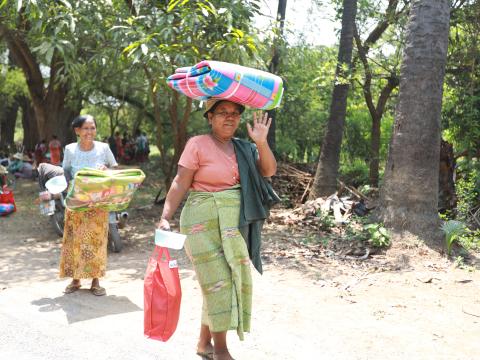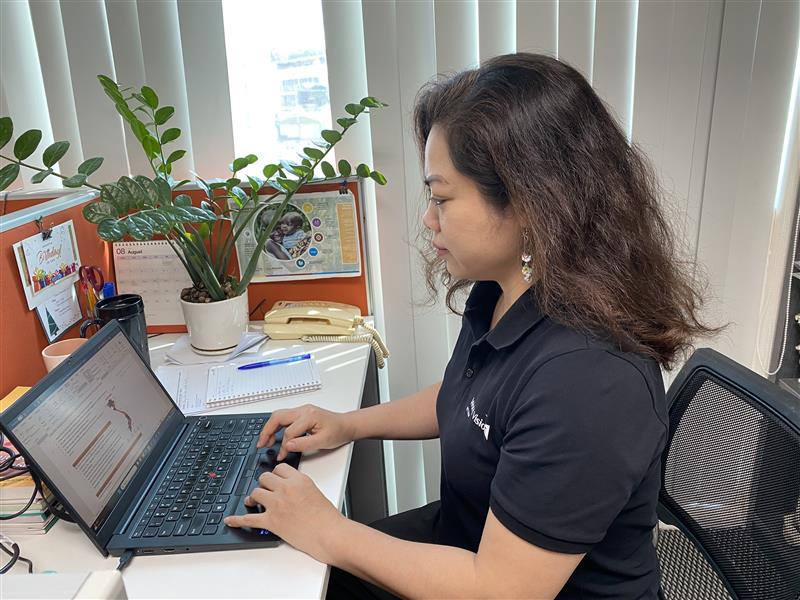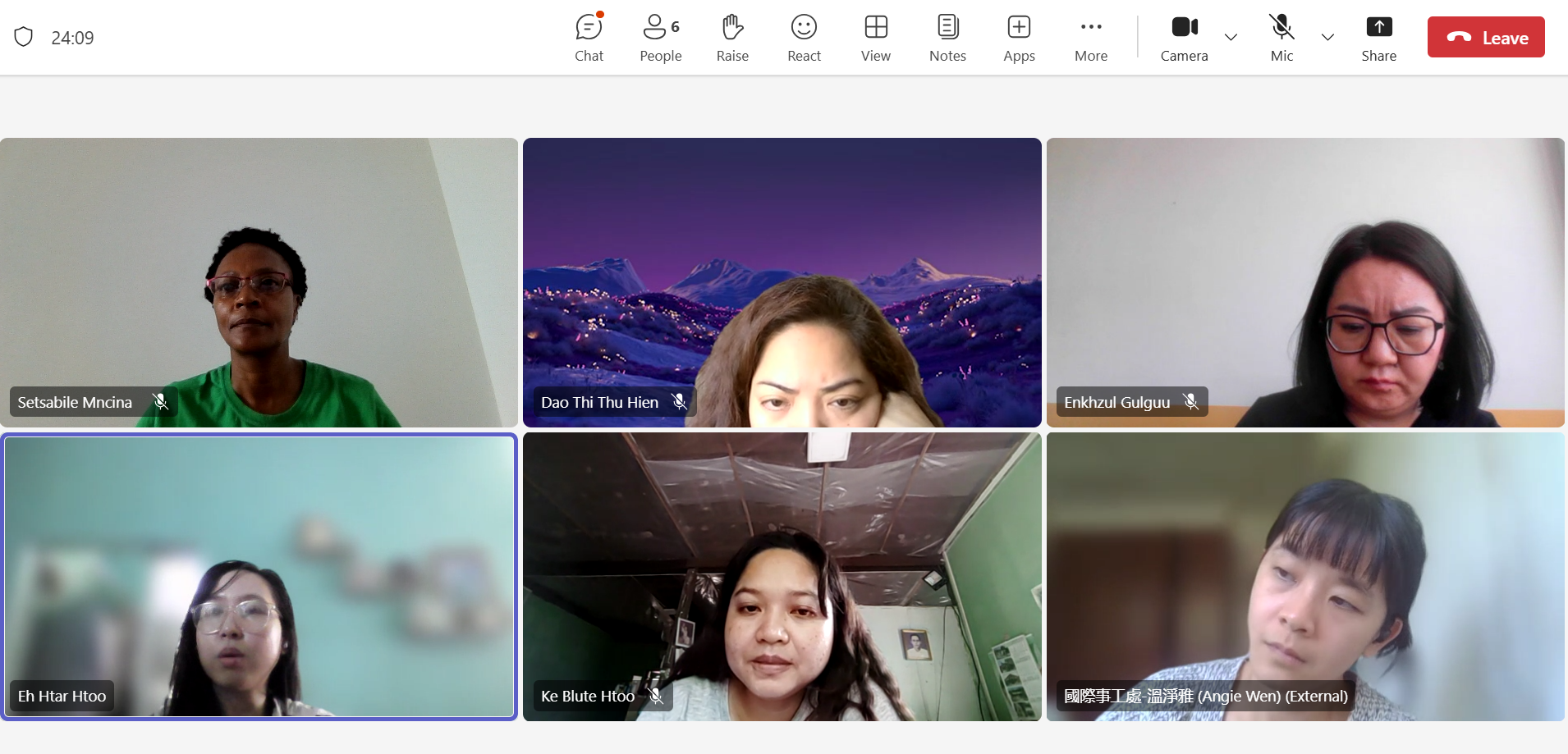Responding beyond borders: Making a difference, even from a distance

Dao Thi Thu Hien, Sr Grants Acquisition and Management Officer, World Vision Viet Nam, highlights the power of rapid, virtual collaboration in securing over $5 million in emergency funding. She puts a spotlight on how virtual deployments can bridge global expertise with local needs, offering scalable, cost-effective solutions in an increasingly complex humanitarian landscape.
The role you don’t see—but that makes everything possible
"The storm took everything from us, but thanks to the assistance, we have been able to rebuild our home, take care of our health, and start over. I never thought I would recover from the losses, but now, I feel hopeful again." — A mother in Viet Nam, speaking about an emergency program funded by a grant I helped secure after the Yagi response.
I’ve worked in the humanitarian sector for over 15 years, including grant acquisition – crafting funding proposals that turn needs into solutions, urgency into action that connect donors’ resources to communities’ needs.
It’s a behind-the-scenes role, far from the spotlight. I’m not the one distributing relief kits, comforting children, or cutting ribbons at project launches. But without the work behind the scenes — the proposals that connect donors’ resources to communities’ needs — many of those front-line moments would never happen.

Yet in today’s world, where funding is shrinking and crises are increasing, connecting donors with communities is lifeline work.
A call across borders: Saying yes to Myanmar
In March 2025, when I saw the news of the devastating earthquake in Myanmar, the pull in my chest was immediate. The scenes were heartbreaking—families displaced, children afraid, communities shattered. So, when World Vision Myanmar reached out asking for remote support, I said yes without hesitation.
I had worked with colleagues from Myanmar before. This time, the stakes were higher – needs were immense, deadlines tight, and resources stretched thin. The team on the ground was overwhelmed, but I knew I could help from afar—by coordinating and developing urgent funding proposals so they could focus on delivering life-saving aid.
What it takes to lead from afar
Supporting a humanitarian response remotely is both urgent and humbling. You work in a context that is not your own — different culture, demographic, and pace — and yet you must act quickly, decisively, and with deep respect for local leadership.
In just four weeks, our team developed 10 proposals and secured over USD 5 million in life-saving support – from Germany's Relief Coalition (ADH), Australian Humanitarian Partnership (AHP), Canadian Humanitarian Assistance Fund (CHAF), Dutch Relief Alliance (DRA), the Hong Kong Government, UN Women, and others. I led five of these proposals.
Remote collaboration under pressure
Working virtually during an emergency is demanding. Timelines were tight—some proposals had just 48–72 hours to turn around. My collaborators were across at least five time zones. and more often than not, it meant working through the night, jumping between drafts, and answering calls and replying to messages at odd hours – all to keep things moving.
It was exhausting at times. We faced internet outages, overlapping edits, and fatigue that came in waves. But we also had systems:
- Tools: Microsoft Teams, SharePoint, shared trackers
- Templates: Pre-filled donor compliance sections
- Processes: Real-time version control that cut turnaround time by 50%
We stayed grounded through small, steady rituals: daily check-ins, async coordination, and the occasional meme or message just to say, “You’re doing great.” These moments built trust and kept us going.
 It wasn’t glamorous. It was long nights, back-to-back edits, and constant coordination. But what kept us going was simple: a shared sense of purpose, mutual support, and the knowledge that every word we wrote could bring real help, faster, to people in urgent need.
It wasn’t glamorous. It was long nights, back-to-back edits, and constant coordination. But what kept us going was simple: a shared sense of purpose, mutual support, and the knowledge that every word we wrote could bring real help, faster, to people in urgent need.
Peer-to-peer learning in real time
This deployment wasn’t just about writing proposals – it was about capacity sharing. There was no formal training. Instead, we learned together, side by side, every day, under pressure. We brainstormed theories of change, revised budgets line by line, and navigated complex donor feedback in real time virtually.
One teammate messaged me during a particularly demanding week: “Without your help, meeting all these demands would have been challenging.” This simple message reminded me that real capacity-building happens in the thick of it. Over time, I watched colleagues grow more confident—taking ownership of their sections, offering new ideas, and leading conversations. By the end, junior team members who had been hesitant at the start were confidently driving proposals forward. That’s the kind of impact I cherish – not just the funding secured, but the people strengthened.
Why virtual deployments matter now more than ever
The humanitarian landscape is changing. Crises are increasing. Budgets are thinning. Travel is harder. But needs keep rising. That’s why virtual deployments, when done well, offer a scalable solution to bring global expertise to local crises, quickly and cost-effectively. They bridge the gap between donor intent and community need.
To make them more effective, we need better tools. I call on developers and technologists to partner with us in building digital platforms that support collaboration under pressure, across borders, and in low-resource settings.
To the technologists and innovators reading this: partner with us. Help us build tools that make showing up from afar easier, faster, and more impactful.
A message to the next generation of humanitarian workers
You might never appear in a news photo. You might spend more hours working behind a desk than in the field. You may wonder if what you do is enough.
It is. Your hard work is not in vain.
Behind every field impact story is someone who wrote the proposal, built the budget, and maintained a strong donor relationship. Behind every life rebuilt is a chain of people — some visible, many not — who made it possible.
Your presence matters. Your skills matter. Your heart matters. It’s part of the whole.
Because in the end, it’s not about where we stand.
It’s about who we serve — and why.
So, this World Humanitarian Day, I honor you: the quiet responders, the bridge builders, the ones who keep showing up.
Keep doing good, even when it’s hard—because in time, the good you’ve planted will grow, if you don’t give up.